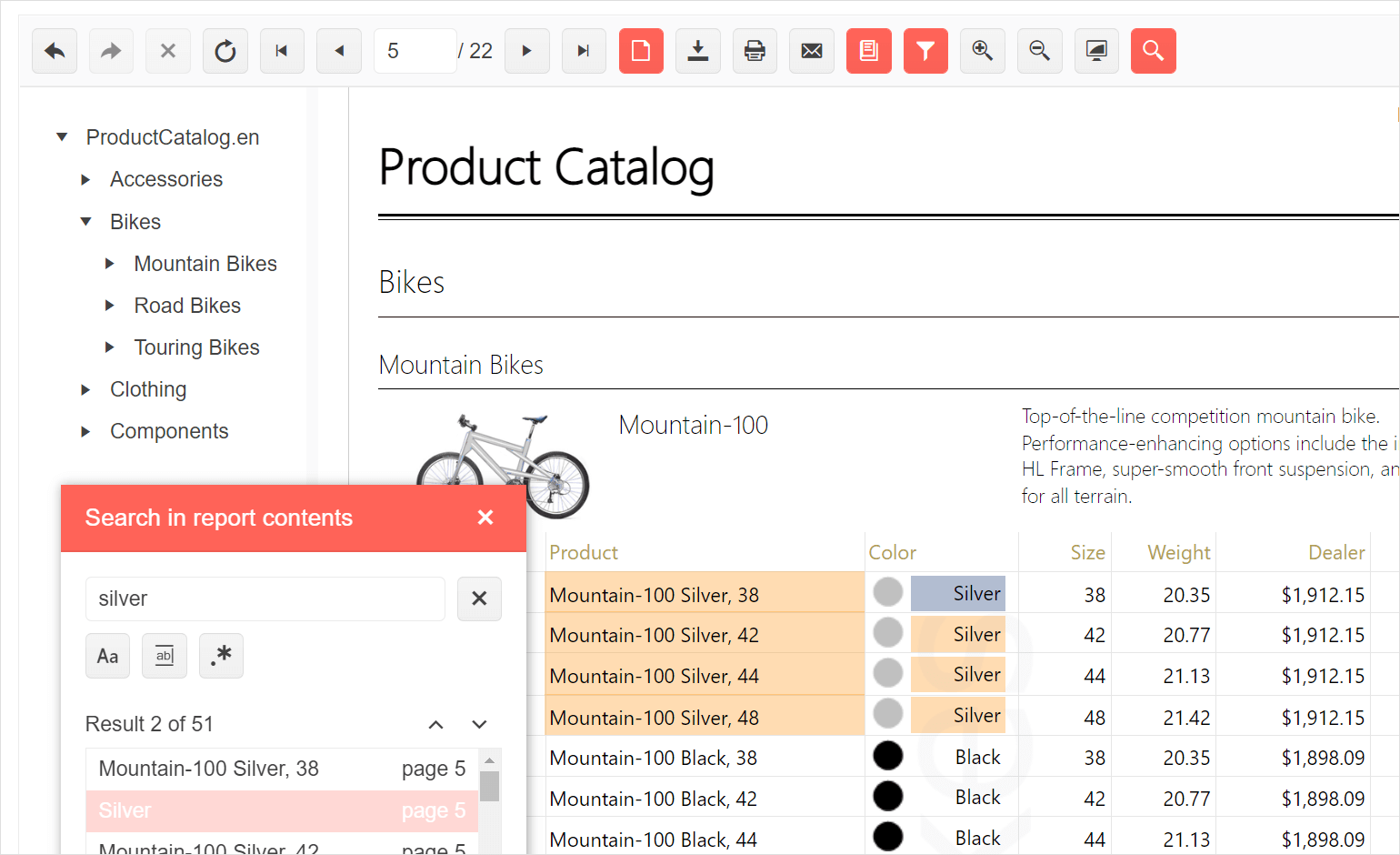
Telerik Reporting
What's New R1 2023
What's New HistoryPredefine and Reuse Data Sources Across Different Reports
The Web Report Designer enables you to embed report authoring functionality into your Web applications. The report authors can now predefine Data Source instances that connect to the source data and return tabular data sets. The authors then reference these data sources when creating new or editing existing reports. There are two major benefits of this functionality. First, this empowers the report authors to reuse one data source definition across multiple reports, conveying different messages. What is even more powerful, two professionals can collaborate to produce the reports: A data expert can define the data sources, and the visualization specialist can use a data source as a client to present the data in the best possible way. We also introduced APIs with extension points, enabling you to programmatically provision the predefined data sources or filter out data sources for particular users. We called the feature Shared data sources.

Improved Blazor Report Viewer Control
We released the Native Blazor Report Viewer control in R3 2022, bringing the native experience, stylization, and programming model when targeting the modern Web with Blazor technology. With R1 2023, we add the following features to improve the end-user experience:
- Infinite scroll enabling the end-user to scan the report document using only the mouse scroll
- Content search controls to find a particular word or phrase within the report document
- Back-and-forth navigation after a drill-through action is triggered to switch between the initial report and the drill-through report
- Tooltips interactivity to display additional information to end-users
We also introduced the following developer-oriented features to improve the embeddability of the control:
- You can now localize the Native Blazor Report Viewer to improve the adoption of the control among your end users
- You can now use the Native Blazor Report Viewer to embed server reports generated on a Telerik Report Server instance
- You can now use Client-side APIs to customize and attach application logic at runtime.

Native Blazor Report Viewer Visual Studio Item Template
You can now easily embed the Native Blazor Report Viewer into your app using a dedicated Visual Studio item template. The corresponding wizard tooling enables configuring the must-have settings of the control. These include the connection of the control to the backend REST Reports service or a Report Server instance and the initially displayed report. If no declarative reports are available, the setup will add a sample report to make sure the viewer will be runnable.

.NET 7 Support on Windows
Embed Reporting functionality in your .NET 7 applications as this new version of the developer platform is now supported when targeting Windows deployment. The REST report service that enables all HTML5-based web report viewers, the Native Blazor Report Viewer, and the desktop report viewers for WPF & WinForms are all compatible with .NET 7 when targeting Windows deployment. Note that Linux deployment is still not supported.

Report Engine Additions
You can now propagate data to an inner report using the newly introduced DataSource property on the SubReport item. This is extremely useful if the main report is bound to a data source supporting hierarchical data like JSON (either using the JsonDataSource or the WebServiceDataSource component). Until now, Telerik Reporting only supported propagating parameter values to the inner report, and it had to resolve the inner data itself based on these parameter values.
You can write more concise expressions when fallback condition matches are needed. The new Ifs and Switch conditional functions replace the need for nesting If function calls. Additionally, the If function inherited the original IIf function, introducing “lazy” evaluation of its arguments and thus optimizing the report processing. Lastly, more values are considered valid when conditional arguments are evaluated, e.g., 0 is considered false and 100 is considered true. Read more about the introduced behavior in the Conditional functions help article.
You can now upgrade from older Telerik Reporting versions easier as we introduced an engine execution switch to apply per report as necessary. This switch turns off an optimization introduced in the more recent product versions. This optimization is not compatible with a legacy report programming model that changed the report definition at runtime. Using the new switch, you can take advantage of the optimization for your future reports without having to rework your legacy report definitions.

Web Report Designer Improvements
Web Report Designer users can now enjoy an improved design experience when editing Table/Crosstab/List items. When they select multiple cells, the selection border now traces these cells to make the operation visual hint clear. Additionally, the resize handles appear only on the bounding rectangle of the selected cells instead of on each individual cell, making the resize call-to-action straightforward. Resize operations affect the included rows or columns proportionally.

New features & Roadmap
Have a feature request?
Post your feedback via the Reporting feedback portal or the public forums
What's new across all Telerik products?
See the updates feed

Next Steps
See Telerik’s Report Designer in action and check how much it can do out of the box
Check out the offers. Purchase an individual license for .NET reporting or treat yourself to one of our bundles.
Try Telerik’s .NET Reporting tool with dedicated technical support.


